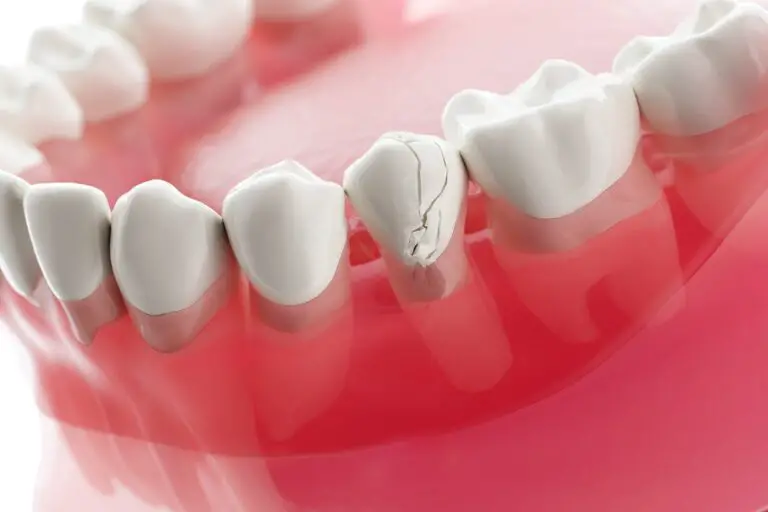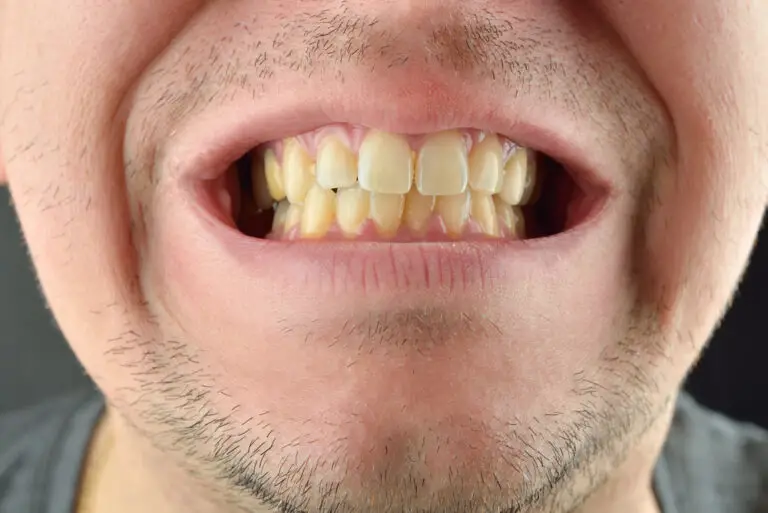Are you struggling with a sharp tooth edge that is causing discomfort and irritation in your mouth? You may be wondering if you can file down your tooth with a nail file. While it may seem like a quick fix, it’s important to understand the potential risks and consequences of attempting to file down your teeth at home.
According to dental experts, using a nail file to file down your teeth can cause permanent damage to your teeth and gums. This is because nail files are not designed for use on teeth and can easily wear down the enamel, leading to sensitivity, decay, and even tooth loss. Additionally, filing your teeth at home can result in uneven teeth and bite, which can lead to further dental issues down the line.
Before attempting to file down your teeth at home, it’s important to consult with a dental professional. They can assess the condition of your teeth and recommend the best course of action to address any sharp edges or discomfort. In some cases, a simple dental procedure like tooth contouring may be all that is needed to smooth out rough edges and improve your dental health.
Understanding Teeth Anatomy

Before deciding to file down your teeth with a nail file, it’s important to understand the anatomy of your teeth. Teeth are complex structures that have several layers and structures that work together to perform various functions. Here is a brief overview of the anatomy of teeth:
Enamel
The outermost layer of your teeth is called enamel. It is the hardest substance in your body and protects your teeth from wear and tear, as well as from harmful bacteria and acids.
Dentin
Dentin is the layer beneath the enamel. It is softer than enamel and contains tiny tubes that connect to the nerves in your teeth. When the enamel is worn down, the dentin can become exposed, causing sensitivity and pain.
Pulp
The pulp is the innermost layer of your teeth. It contains nerves, blood vessels, and connective tissue. The pulp is responsible for keeping your teeth alive and healthy.
Gum line
The gum line is where the tooth meets the gum. It is important to maintain good oral hygiene to prevent gum disease, which can cause the gum to recede and expose the sensitive root of the tooth.
Roots
The roots of your teeth anchor them into your jawbone. They also contain blood vessels and nerves that supply the tooth with nutrients and sensation.
Knowing the anatomy of your teeth can help you understand the potential risks and consequences of filing them down with a nail file. It’s important to consult with a dental professional before attempting any DIY dental procedures.
Risks and Dangers of Filing Teeth with Nail File
Filing your teeth with a nail file may seem like a quick and easy way to get a more even smile, but it can be a dangerous practice that can cause long-term damage to your teeth.
One of the biggest risks of filing your teeth with a nail file is that you may end up removing too much enamel, which is the protective layer that covers your teeth. Enamel is essential for protecting your teeth from decay, and once it’s gone, it doesn’t grow back. Removing too much enamel can also make your teeth more sensitive to hot and cold temperatures, as well as sweet and sour foods.
Another risk of filing your teeth with a nail file is that you may accidentally file away healthy tooth tissue, which can lead to cavities, infections, and other dental problems. Additionally, if you file your teeth too aggressively or at the wrong angle, you can damage the root of your tooth, which can cause pain and sensitivity.
It’s also worth noting that using a nail file on your teeth can introduce bacteria into your mouth, which can lead to infections and other health problems. Nail files are not designed for use on teeth and are not sterile, which means that they can harbor harmful bacteria that can cause infections.
In short, while filing your teeth with a nail file may seem like a quick and easy fix, it’s a dangerous practice that can cause long-term damage to your teeth and overall oral health. It’s always best to leave dental work to the professionals and avoid DIY solutions that can put your health at risk.
Professional Dental Procedures for Teeth Reshaping

If you’re considering teeth reshaping, there are a few professional dental procedures you can choose from. These procedures are typically performed by a cosmetic dentist, and they involve removing small amounts of tooth enamel to change the shape, size, or length of your teeth.
Enameloplasty
Enameloplasty, also known as teeth filing or contouring, is a cosmetic dental procedure that involves removing small amounts of tooth enamel to reshape the teeth. This procedure is typically used to correct minor imperfections such as small chips, uneven edges, or slightly overlapping teeth. Enameloplasty is a quick and painless procedure that can be completed in a single office visit.
Dental Bonding
Dental bonding is a cosmetic dental procedure that involves applying a tooth-colored resin material to the surface of the teeth. The resin is then sculpted and shaped to correct imperfections such as chips, cracks, or gaps. Dental bonding is a relatively quick and easy procedure that can be completed in a single office visit.
Dental Veneers
Dental veneers are thin, custom-made shells that are placed over the front surface of the teeth. Veneers can be used to correct a variety of cosmetic dental problems, including chipped, stained, or misshapen teeth. The veneer procedure typically requires two office visits, as the veneers must be custom-made in a dental lab.
Orthodontic Treatment
Orthodontic treatment, such as braces or clear aligners, can be used to correct a variety of cosmetic dental problems, including crooked or misaligned teeth. Orthodontic treatment can take several months or even years to complete, but the results can be dramatic and long-lasting.
Overall, there are several professional dental procedures available for teeth reshaping, and the right choice for you will depend on your specific dental needs and goals. Be sure to consult with a cosmetic dentist to determine which procedure is right for you.
Alternatives to Nail Filing
If you’re looking to fix uneven teeth or sharp edges, filing them down with a nail file may seem like a quick fix. However, it’s important to note that this can actually cause permanent damage to your teeth. Here are some alternative options to consider:
Dental Bonding
Dental bonding is a cosmetic procedure that involves applying tooth-colored resin to your teeth to improve their appearance. This can be a great option for fixing small chips, gaps, or uneven teeth. Your dentist will use a special adhesive to bond the resin to your teeth and then shape and polish it to match the rest of your teeth.
Veneers
Veneers are thin, custom-made shells that are placed over the front of your teeth to improve their appearance. They can be a good option for fixing more severe cosmetic issues, such as crooked or discolored teeth. Your dentist will remove a small amount of enamel from your teeth to make room for the veneers, and then bond them to your teeth using a special adhesive.
Orthodontic Treatment
If your teeth are uneven or crooked, orthodontic treatment may be the best option for you. This can involve braces, clear aligners, or other appliances that gradually move your teeth into the correct position. While this can take longer than other options, it can provide a more permanent solution and improve your overall oral health.
Dental Crowns
If you have a damaged or decayed tooth, a dental crown may be the best option for restoring its appearance and function. Crowns are custom-made caps that are placed over your existing tooth to protect it and improve its appearance. They can be made from a variety of materials, including porcelain, metal, or a combination of both.
It’s important to talk to your dentist about your options and which one may be best for your specific needs. While filing down your teeth with a nail file may seem like a quick fix, it can cause permanent damage and should be avoided.
Impacts on Oral Health

Filing your teeth with a nail file may seem like a quick and easy solution to fix minor cosmetic issues, but it can have serious impacts on your oral health. Here are some of the potential risks associated with filing your teeth with a nail file:
- Damage to tooth enamel: Tooth enamel is the hard, protective layer that covers the outside of your teeth. Filing your teeth with a nail file can cause irreversible damage to your enamel, leaving your teeth vulnerable to decay and sensitivity.
- Increased risk of infection: Filing your teeth with an unsterilized nail file can introduce bacteria into your mouth, increasing the risk of infection. In severe cases, this can lead to abscesses, which require immediate dental treatment.
- Misalignment of teeth: Filing your teeth down can alter the shape and alignment of your teeth, leading to bite problems and jaw pain. This can also make it difficult to chew and speak properly.
- Weakening of teeth: Filing your teeth down too much can weaken them, making them more prone to cracking and breaking. This can lead to the need for costly dental procedures such as crowns, bridges, or even tooth extraction.
Overall, filing your teeth with a nail file is not recommended. If you have concerns about the appearance of your teeth, it’s best to consult with a dental professional who can recommend safe and effective treatment options.
Preventive Measures for Healthy Teeth
Maintaining healthy teeth is essential to prevent tooth decay, gum disease, and other dental problems. Here are some preventive measures you can take to keep your teeth healthy:
Brushing
Brush your teeth twice a day with fluoride toothpaste. Use a soft-bristled toothbrush and brush in circular motions. Be sure to brush all surfaces of your teeth, including the backs of your teeth and your tongue.
Flossing
Floss your teeth at least once a day to remove plaque and food particles from between your teeth. Use a gentle sawing motion and slide the floss up and down between your teeth. Be sure to floss between all of your teeth, including the back teeth.
Healthy Diet
A healthy diet is essential for healthy teeth. Avoid sugary and acidic foods and drinks, as they can cause tooth decay and erosion. Instead, eat a balanced diet that includes plenty of fruits, vegetables, whole grains, and lean proteins.
Regular Dental Check-ups
Regular dental check-ups are essential for maintaining healthy teeth. Visit your dentist at least twice a year for a check-up and professional cleaning. Your dentist can detect and treat dental problems early on, before they become more serious.
Avoid Nail Filing
While it may be tempting to file down your teeth with a nail file, it is not recommended. Using a nail file on your teeth can cause damage to your tooth enamel, which can lead to tooth sensitivity, decay, and other dental problems. If you are unhappy with the appearance of your teeth, talk to your dentist about safe and effective cosmetic dental procedures.
Frequently Asked Questions
Is it safe to file down teeth with a nail file?
Filing down teeth with a nail file is not safe and can cause permanent damage to your teeth. Teeth are made up of layers of enamel, dentin, and pulp, and filing down too much enamel can expose the sensitive dentin layer, which can lead to pain and sensitivity. Additionally, using a nail file can cause uneven and jagged edges, which can further damage your teeth.
Are there any risks associated with filing down teeth yourself?
Yes, there are several risks associated with filing down teeth yourself. Filing down too much enamel can expose the sensitive dentin layer, which can lead to pain and sensitivity. Additionally, using a nail file can cause uneven and jagged edges, which can further damage your teeth. Furthermore, if you file down your teeth too much, you may need to have them repaired by a dentist, which can be expensive.
What are the alternatives to filing down teeth with a nail file?
There are several alternatives to filing down teeth with a nail file. If you have a sharp or uneven tooth, you should see a dentist. A dentist can file down your tooth using professional dental tools, which will ensure that your tooth is filed down evenly and safely. Additionally, if you are looking to improve the appearance of your teeth, a dentist may recommend other cosmetic treatments, such as veneers or bonding.
Can a dentist file down sharp teeth?
Yes, a dentist can file down sharp teeth. If you have a sharp or uneven tooth, you should see a dentist. A dentist can file down your tooth using professional dental tools, which will ensure that your tooth is filed down evenly and safely.
Is it possible to file down natural teeth?
Yes, it is possible to file down natural teeth, but it should only be done by a dentist. Filing down too much enamel can expose the sensitive dentin layer, which can lead to pain and sensitivity. Additionally, using a nail file can cause uneven and jagged edges, which can further damage your teeth.
Can a broken tooth be filed down with a nail file?
No, a broken tooth cannot be filed down with a nail file. If you have a broken tooth, you should see a dentist. A dentist can determine the best course of treatment, which may include a filling, crown, or other dental restoration.






